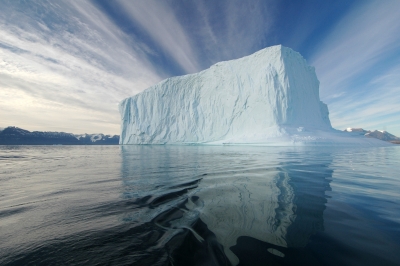
On the world’s largest island is located the world’s largest national park. The Northeast Greenland National Park (in Greenland) spans more than nine-and-a-half lakh sq.km… which is, in fact, larger than several countries in the world! Also the northernmost national park in the world, it was set up in 1974 to govern this uninhabited region. It remains uninhabited to this day and has no permanent residents. While the place is visited only by researchers and scientists, sealers and whalers have regular access to the region. Offering spectacular scenery, this Park is significant as a biosphere reserve for a variety of tundra vegetation and wildlife. The region is said to have a very high concentration of musk ox close to about half the world’s population.
Wildlife
While a majority of the birds here is migratory, the Park nurtures more than 50 species of permanent breeders. The birds that can be spotted here include geese, eiders, ducks, divers, fulmars, cormorants, plovers, sandpipers, razorbills, puns, skuas, gulls, terns, eagles, falcons, doves, ptarmigans, black ravens, snow buntings, pipits, and wheatears. The animals roaming the region include polar bears, seals, grey wolves, Arctic hares, Arctic foxes, caribou, walruses, and musk oxen.
Threats
Greenland’s only national park is not without its share of concerns. Since the region does not have permanent residents, direct threats from humans hardly exist. However, climate change, considered by many to be the direct result of human activity has its impact on the region. Rising global temperature, rising sea levels, and intensification of extreme events are of great concern, and could impact the landscape and the wildlife of the region. In fact, a study by scientists last year revealed that another threat to Greenland’s glaciers is lurking beneath the ice. It has been long-known that increasing air temperatures are adding to the surface melting on the island’s ice sheet. But the new study discovered that warm ocean water moving beneath the vast glaciers is causing them to melt even more quickly. The study focussed on a glacier in northeast Greenland. Interestingly, a more recent study – earlier this month – stated that these very glaciers could help offset the effects of climate change.
A wonder material!
As a consequence of global warming, Greenland glaciers are retreating. But these retreating glaciers also expose ultra-fine silt deposit. “Known as glacial rock flour, the silt is crushed to nano-particles by the weight of the retreating ice sheet, which deposits roughly one billion tonnes of it on the world’s largest island per year.” It has been learnt that the silt could actually be used as nutrient-rich mud on agricultural lands for boosting agricultural output. And not just that. They also absorb carbon dioxide from the air in the process. It has been found that “adding 25 tonnes of glacial rock flour per hectare increased crop yield on barley fields in Denmark by 30%”, and also “researchers from the University of Ghana, managed to increase maize yields by 30% using glacial rock flour to offset the impact of rain and heat on poor farmland”, offering a glimpse of what is perhaps a rare benefit from global warming?
Picture Credit : Google




